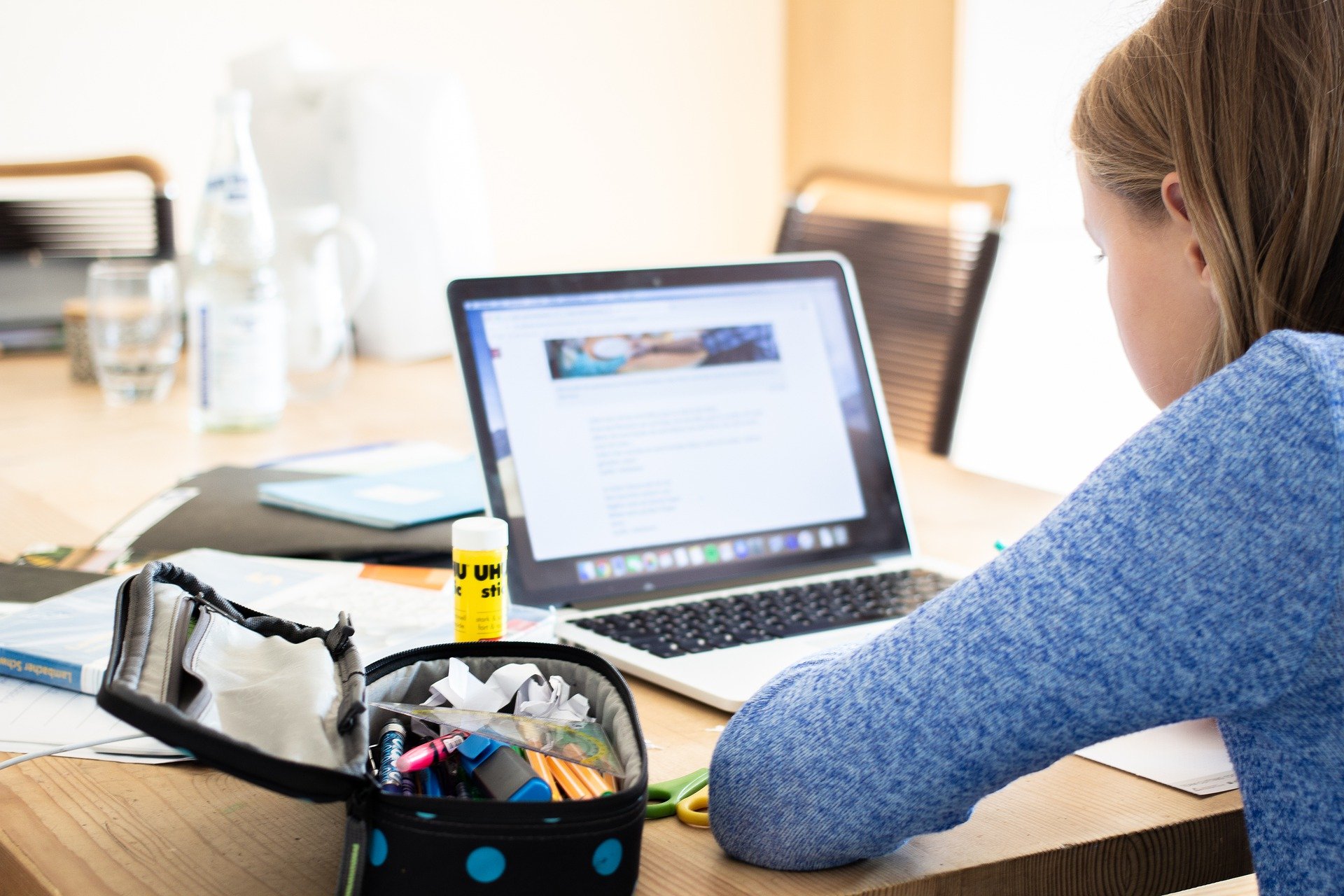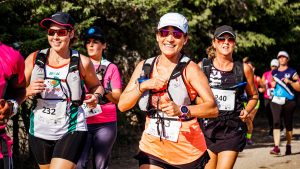Here we go again with the homeschooling. Like everything in this pandemic it’s not easy but it has to be done. I’m a mother. I worry about my children. It’s natural. This particular concern is not so much about their education, their schools have been excellent from the very first school closure. No, this is a concern about their health. Actually, it’s a concern about the health of all school children. I’m worried. Children have become home workers and as someone who has worked at home for a couple of years now, I know how much effort it takes to do it healthily.
I have a special interest in physical activity for good health, I’m seeing first hand, the plummeting activity levels of my three homeschooling teens and I know this will impact their health both now and potentially in the future. You might not think this is a big issue and that they’ll soon get their fitness back once lockdown is over. I’m sure they will but the fact that they will have had pretty much half a year not at school has more subtle and longer term effects on their health. Simply being aware of these effects can help us to encourage our kids to have a slightly healthier day. Slightly healthier days for half a year add up to a much healthier year. A much healthier year can mean a much healthier future.
I’m slanting this piece towards teens because I have three of them at home (13, 15, 17) and I think the challenges of getting them to do what you suggest are greater than that of a younger child but many of the suggestions apply to all ages.
So, what exactly am I worried about and what can be done to change it?
Let’s start by looking at the Chief Medical Officers’ guidelines for physical activity for 5 to 18 year olds. The recommendations for children are:
- An average of at least 60 minutes per day of moderate to vigorous physical activity.
- Participation in a variety of types and intensities of physical activity through the week to develop movement skills, muscular fitness and bone strength.
- Minimising sedentary time and breaking up long periods of sitting with at least light physical activity.
The routine of the school day helps children to be healthy in ways they don’t realise and propels them towards these targets. My kids get the bus in to town (most days) and then have a ten-minute uphill walk up to school. Their rucksacks are usually extremely heavy. I struggle to even lift my sons’ bags sometimes! Their lessons vary in length but pre-pandemic, every 35 to 60 minutes they would get up and move around the school site between classes. Often that involved a bit of a run! Then of course there’s the formal P.E and games lessons which for my lot includes walking off site to access the playing fields. At lunch time my kids were often in clubs – my daughter in the dance studio, my sons doing circuits in the gym with the rowing club. Sometimes they’d stay for after school sports clubs too.
When you look at that day there’s an awful lot of movement. Moderate and vigorous activity, muscle strengthening and regular light activity to break up sedentary time. This doesn’t include out of school fitness hobbies which have obviously taken a hit too. This is their default movement pattern five days a week, every week in term time. School keeps them healthy.
Where are we now? Rolling out of bed five minutes before school starts. Stumbling over to the desk and logging in without a camera. Spending time messaging with friends between lessons or having a quick online gaming session at lunch. No games or P.E. No run to the bus. No heavy bags. Just sit, sit, sit.
The benefits of physical activity are widely known and have strong medical evidence behind them. These are the benefits I’m worried about children missing out on:
Bone health. By age 18 you have 90 per cent of your bone mass. You form another 10 percent by your late twenties and early thirties and then it starts falling. It’s vital to build as much bone mass as you can in your teens so you are starting from as high as place as possible when it begins to decline. Low bone mass later in life can result in osteoporosis, a condition where bones fracture easily leading to significant pain and disability. To be strengthened, bones need to be stressed by impact with the ground such as during running and jumping and by the muscles and tendons working against resistance and tugging on the bones to stimulates bone growth.
Muscle health. Muscles are vital to good health. The proteins called myokines that active muscles release help to reduce inflammation in the body which we know lowers the risk of major diseases such as heart disease, cancer and type 2 diabetes. Developing muscle fitness is important for children. Building pathways between the nerves and muscles is essential for good co-ordination and balance.
Healthy metabolism. Physical activity helps children to reach and maintain a healthy weight. Sedentary behaviour is linked to higher levels of obesity. Bodies were designed to move and when you sit for more than about 20 to 30 minutes your body slips into storage mood and the energy you consume is more likely to be stored as fat and gives you a higher risk of obesity and type 2 diabetes.
Brain health. Children who are physically active learn better and faster. Concentration and problem solving skills are higher after movement. Exercise has been shown to increase the size and activity of the hippocampus, the part of the brain that’s most involved with memory. The benefits decline in the weeks after activity stops. Exercise also helps sleep and sleep is so important for information processing and generally for growing bodies.
Social benefits. We’re all missing out on socialising but when it comes to teens I think the benefits that being active with others can bring are huge. There’s the motivation of others to take part in the first place – your mate’s going to badminton club so you’re persuaded to go too. Learning to work as a team. Developing sportsmanship. The encouragement to challenge and push yourself. The chit-chat and laughs you share with others. It’s much harder and less fun on your own.
Healthy habits. Physical activity levels decline as children get older and move into adolescence – particularly in girls. The habits we create as children carry through into what we are likely to do as adults. Creating and sticking to new behaviours is hard. Getting out of the habit of doing things makes it difficult to return to them. Being inactive is easier and takes less effort than being active. Inactive habits developed during lockdown could be hard to reverse.
Like most problems during this pandemic they can be solved if we accept where we are and then think creatively to find a way out of them. I know it’s tricky with teens, I have three. Getting them to do anything can be a struggle! I refuse to be a nag. I do however believe that children now are taught much more about healthy lifestyles at school and have more of an understanding of the importance of looking after their physical and mental health. I don’t know your situation by my children’s teachers are doing what they can to encourage them to move about and get outside.
I’ve worked at home for a couple of years now and have simply had to build healthy habits into my work day. It’s the little bits of movement that have been lost and it’s not too difficult to at least replace some of them. Here’s what I’m trying with my kids and I hope it might be useful to you too:
- Discussion. Talk about it. Explain why you are concerned. Point out what the benefits of exercise can do for them. Show them this blog. Ask them what they think will work for them. Reflect on how it made them feel after they’ve done it. Did their day go better? Did they sleep well? Could they concentrate more? Seeing the benefits can be very motivating.
- Plan and encourage routine. Help them look ahead at the day and work out when the best time for activity is. Getting up a few minutes earlier will give time for a bit of movement, even if it’s just to the kitchen for breakfast and the bathroom for teeth brushing (I’m convinced that the lack of morning routine means my three have brushed their teeth way less during lockdown). Just leaving it to ‘I’ll fit it in when I can’ leads to lost opportunities. Suggest and advise don’t instruct, it has to come from them.
- Move between lessons. Thankfully my children’s schools have built some short breaks between lessons and a longer break at lunch. But the temptation of a five or ten minute break is to stay at the desk or move to the bed and reach for technology. Even going to the kitchen to get a drink is better than nothing. The more they drink the more they’ll need to pee which means more movement! Encourage them to see the importance of just getting up and walking around. If they’re keen they could do some simple exercises too.
- Stand when they can. This sounds silly but it breaks up sitting time. Not all of a lesson involves writing or typing. If there’s something to watch or listen to, then do it standing up. By all means chat with your friends at break, social interaction is vital but why not do it standing or walking around instead of lying on your bed?Doing one longer bout of exercise doesn’t cancel out all the sitting in the day. It’s vital to break that up and move frequently for the best health benefits.
- Get outside every day. This was so much easier in the first lockdown when the evenings were light and warm. The only chance now is before, during or just after school. My daughter and I have been taking a short ‘walk to school’ in the morning because she said it helps her. It is difficult with the heavy rain and wintery weather but a brisk walk racks up those required minutes of activity, helps children to concentrate, makes them sleep better and if the sun is out will give a boost of vitamin D too.
- Be active in the evenings. If it’s hard to be active during the school day then try to use the evenings. Right after school is good. It creates a definition between work and home which all home workers find to be very important for their mental health. If it’s too dark for a walk, run or bike ride, you can turn to online activities. Lots of local clubs are offering their activities over Zoom. Sport England have a great Join the Movement campaign and provide lots of suggestions on how to get active at home including The Body Coach, POPSUGAR fitness and Yoga with Adriene which are all free and suitable for teens.
- Be a role model and be active together. Many teens could think of nothing worse than doing an exercise routine alongside their parents! But lockdown in this house has actually provided an opportunity to do things together which has been nice. Walking the dog, running while my son rides his bike or doing a weights session together has helped all of us. Activity levels of adults, especially women has sadly fallen during lockdown so we need to ‘practice what we nag’ too. Role models can have a very positive influence on children’s behaviour and set the norms for a household.
I know we’ve all got a lot on. This post is in no way intended to add to the guilt on parent’s shoulders at the moment. It’s simply to highlight what I think is an important topic that not everyone will be aware of. And to come up with some ideas as to how we can overcome it. I’m struggling with it as much as the next parent but little changes really do add up. Some activity is much better than none. Any tips and ideas from you are very welcome. Perhaps there are some experts in the best way to communicate with teenagers that could give a valuable addition to this topic?
At the end of the day we’re just doing the best we can and that’s enough.
Literally just after I published this blog I saw the publication of the Active Lives Children and Young People Survey. Here’s the link if you want to have a read about the decline in activity levels and challenges faced as well as some of the great initiatives to increase activity levels.
Featured Image: Steven Weirather from Pixabay








This is so important and I really hope it gets read widely. We are lucky in that my two school age kids have worked hard on fitness through both lockdowns, although there is a lot more walking than they did before! But I also know how easy it is for teenagers to just sit around, as that’s what most of their friends do.
Thank you for sharing this.
Yes. It’s hard to motivate teens. I don’t want to nag, it doesn’t work. Mine are pretty good really considering their clubs are all off. It’s hard to get them moving in and off throughout the day though. You’re doing brilliantly – well done
An excellent read Juliet. I couldn’t agree more. The activity level of many teenagers drops and its hard to pursuade them otherwise. Those seeds and examples of exercise and having them experience the joy of movement and being part of a group activity when they are young will hopefully stay with them and it will rekindle at some point in the future.
As you say lots of movement activity is lost at the moment and I fear it will be hard for many of the teenagers to get back to previous activity levels.
I am worried for the future of swimming, dance, gymnastics and team sports that they will be a lost generation and those grass root levels will see a huge drop off when active life returns to normal. (Which may not be for some time.)
There will always be passionate people out there ready to restart their groups and clubs. But rebooting a teenager is a whole new level of challenge. I have experience of my own 3 teenagers many years ago and teaching secondary PE for 4 years. They become different beings and have to find their own way through. But as you write those daily movement activities are being lost.
As I look around through this second lockdown. There is much less activity of all generations going on. The weather, the season, the gloom. It’s hard to be motivated to ‘move’ and even professionally active people are finding it hard to keep motivated. Let’s hope for an early spring and lots of rekindled desire to be with like minded people will be enough when this madness ends. But I fear there will be many, young and old who have lost the habit.
The challenge there will be to get a nation active and groups like yours will help restart that movement.
Tough times ahead that’s for sure. I hope there is lots of provision to help schools and clubs to re-engage children when this is over. Thanks for all you did to inspire my children, you certainly sowed those seeds!
I really appreciate the way you have captured the challenges (both physical and mental) in this post. I have four children, three of whom are teens similar ages to yours, Juliet, and amongst all of the really pressing concerns of this third lockdown (not least that two of mine are doing their final year of GCSE/A levels, and that we are all recovering from Covid caught through my husband’s school just before Christmas), it’s tough to make encouraging exercise a priority.
But I love your comment ‘Slightly healthier days for half a year add up to a much healthier year. A much healthier year can mean a much healthier future.’ It’s so important right now that we don’t let the perfect be the enemy of the good, and keep trying for good enough, or having a go, rather than feeling overwhelmed at the size of the challenge.
Another happy thought for me is that I came to fitness and healthy eating late on—I was 29 when I first started to even think about exercise, and it was gradual. I didn’t start running for almost another decade after beginning regular walking, Pilates/yoga and swimming. I was one of those many people (girls especially?) who found school sports intimidating and uninviting, but in their thirties / middle age spend a large proportion of their disposable income on exercise kit, running shoes and race fees!
So there’s always hope. If there had been a yearbook at my school, I would have been a strong contender for ‘Least Likely to… Run a Marathon’. But when the joy of running (or other sports) bites you, you can turn decades of sedentary habits and poor eating around. I’m living proof!
I’ll be sharing this post, because highlighting the challenge is really important; these concerns are my own too. But I know that it’s never too late to find the freedom and power of exercise and looking after your body—it just may tale this generation a little longer.
Thanks so much for your post.
Yes to all of this. There are so many things to try and encourage at the moment. I hope you all make a speedy recovery. So glad you found running worked for you. I don’t know what I would do without it and as you say, it’s never too late.